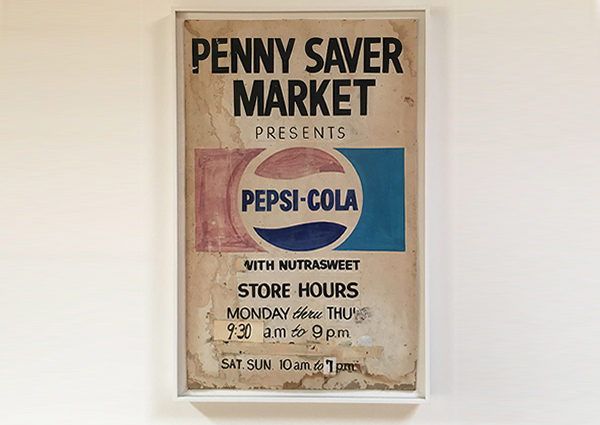In the four-page press release for his show at Blum & Poe, the artist Mark Grotjahn lets us in on the little secret he “knew” as a young man: “Art could be whatever (he) wanted it to be.” That tenet would prove to save his ass when he decided to abandon the human figure that was the main subject of his work; he just looked out his studio window and was inspired, amazingly enough, by the signs on a bar right across the street! Such a fortunate discovery meant he didn’t have to deal with the lengthy considerations most artists go through when switching themes and concepts, he could just paint copies of something nearby that already existed. Unfortunately, by his admission, these new sign paintings were “bitchin,” but not as good as the originals down at the bar; so, rather than make better paintings, the artist decided to switch his pieces with theirs.

Problem solved!
Of course, there was the difficulty that a painting in the art world is frequently not the same as a painting in the art-secular world; after all, Street Art is a genre and not at all the same as street art, which is a job. Some convincing would be required before the exchange, so Grotjahn just used the old line, and I quote: “I’m an artist, this is what I do.” To the store-owning “uncognoscenti” it was a great deal: a new sign for free… and the crazy white guy would even haul away the old one. Finding that his artist’s hoodoo worked better than glass beads on the clueless natives, Mark decided to export his brand of concept/object thievery to other stores. A Lord Elgin for our times, the artist would collect and preserve the quaint artistic expressions of the underclass; plus, day-tripping America’s third-world neighborhoods is inexpensive and the souvenirs practically, if not entirely, free.
No problem!
Well, actually there is a problem; Grotjahn never explained that he would be carting the work of an unknown itinerant sign painter off to a gallery to sell under his name for a four figure sum, minimum. And why should he? As another white, college educated aesthetic imperialist ripping off the ideas and labor of others, he could be confident no one in the “non-artified” underclass would ever encounter, let alone understand, “his” paintings. Even within the “legitimate” art world no one would call him on it, because what’s going on here is a fundamental disconnect between the art-referential worldview of rich collectors or gallerists, and what’s actually going down in the streets. Unfortunately people who can’t shop at Trader Joe’s or Bristol Farms all the time are gonna see fucked up handmade banners and signs at The Busy Bee or Jons; they don’t have to go to a gallery to experience such visual squalor.
It’s basically the 1% versus the 99¢.



